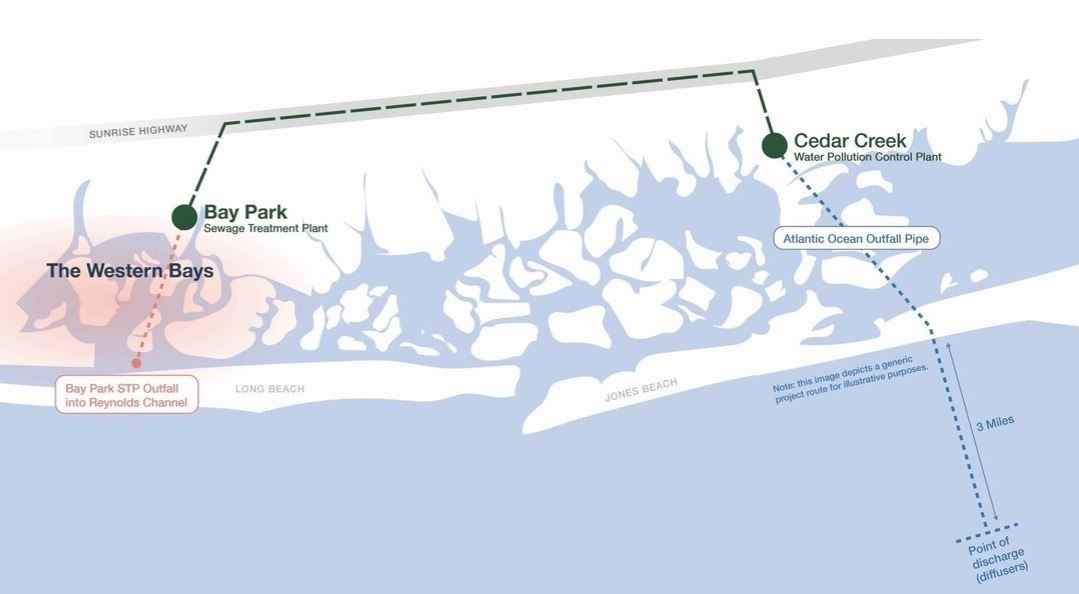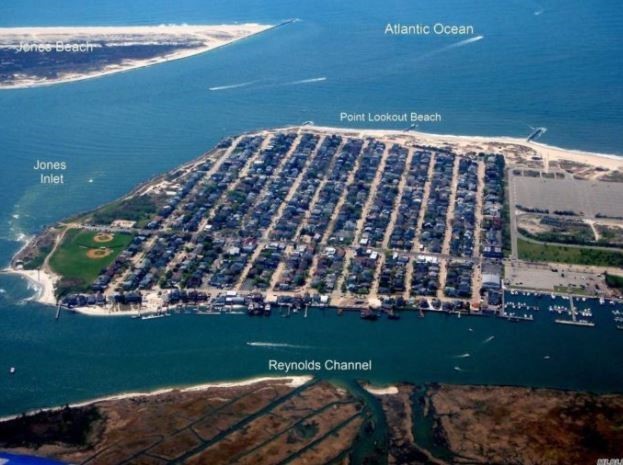Long Island Nitrogen Action Plan (LINAP) - Monthly Newsletter
The New York State Department of Environmental Conservation sent this bulletin on 05/27/2021 10:50 AM EDT |
| DEC Delivers - Information to keep you connected and informed from the NYS Department of Environmental Conservation |
| Share or view as a web page || Update preferences or unsubscribe |
Long Island Nitrogen Action Plan (LINAP) - May Newsletter
|
Nassau County Launches S.E.P.T.I.C.The Septic Environmental Program to Improve Cleanliness (SEPTIC) program, made possible through a $2 million grant from the New York State Environmental Facilities Corporation and the New York State Department of Environmental Conservation, will provide funding to eligible residents and small businesses to replace a cesspool or inadequate septic system with nitrogen reducing Innovative and Alternative Onsite Wastewater Treatment Systems (I/A OWTS). Tens of thousands of homes and small businesses in Nassau County are currently served by cesspools and septic systems. Reversing water quality degradation will depend on replacement of these existing systems with new I/A OWTS. SEPTIC will provide grants for 50 percent of the costs, up to $10,000, for homeowners or small businesses to install these state-of-the-art systems. Eligibility criteria includes:
Qualifying residents can contact SepticReplace@nassaucountyny.gov or 516-364-5861 for more information and instructions on how to apply. Applications can be filled out online at NassauCountyNY.gov/SepticReplace. The Nassau County Soil and Water Conservation District will administer the program with funding provided by the Long Island Regional Planning Council. Western Bays Reconstruction and Resiliency InitiativeNassau County is leading a series of resiliency and sustainability projects that will improve the water quality of the Western Bays. The regional vision for the facility includes nitrogen removal, ocean outfall discharge of treated effluent, and consolidation of local wastewater treatment plants. Water quality improvements will allow for the ecological recovery of the Western Bays and enhance and expand water-based recreational and commercial opportunities. Bay Park Conveyance Project This spring, saw the groundbreaking of the $439 million Bay Park Conveyance Project. The project is a partnership between the New York State Department of Environmental Conservation and the Nassau County Department of Public Works. This innovative project will convey treated water from the South Shore Water Reclamation Facility (SSWRF) which currently discharges an average of 50 million gallons per day of treated water into Reynolds Channel, to the Cedar Creek Water Pollution Control Plant (WPCP) ocean outfall pipe. When completed in three years, the project will divert as much as 75 million gallons of treated water per day and up to 90 percent of the nitrogen loading from Reynolds Channel and the Western Bays each year, improving water quality, regional resiliency and quality of life.
Photo Credit: NYS Executive’s Office Treated water will be conveyed two miles from the South Shore Water Reclamation Facility to an existing aqueduct under the Sunrise Highway, which 7.3 miles will be rehabilitated. A 1.6-mile long main will be constructed to connect the rehabilitated aqueduct to the existing Cedar Creek WPCP outfall. The outfall discharges and diffuses treated water three miles offshore in the Atlantic Ocean.
Photo Credit: Nassau County Western Bay Resiliency Initiative The project will utilize a Design-Build project delivery method which substantially lowers the cost and shortens the construction schedule more than the traditional design-build method. This project is anticipated to be completed in 2024. With a drastic reduction in nitrogen in the Western Bays nearby communities will experience cleaner water, improved quality of life, and restored vital marshlands that protect communities from wave action and coastal surge during severe storms. Long Beach Water Pollution Control Plant Consolidation Project The Long Beach Water Pollution Control Plant (WPCP) Consolidation Project involves the conversion of the Long Beach WPCP to a pump station and rerouting Long Beach sewage – with an average flow historically of 5 million gallons per day (MGD) and current peak flow of about 16 MGD – to the newly upgraded SSWRF, where the sewage will be treated to a higher standard once the treatment upgrades are implemented. The project is expected to be completed by the end of 2024. Point Lookout Sewer Study Nassau County was awarded $2 million to conduct a a feasibility study to construct sewer infrastructure for the Point Lookout area in the Town of Hempstead as part of a Long Island Regional Economic Development Award. This project aims to convert 500 residential and commercial septic systems to a sewage collection system connected to the Long Beach WPCP. The County is in the process of hiring a consultant to design the feasibility study.
Photo Credit: Point Lookout Historical Society South Shore Water Reclamation Facility (SSWRF) Reconstruction and Resiliency Upgrades Nassau County continues to move forward with major reconstruction and resiliency upgrades to the SSWRF, which was severely damaged by Superstorm Sandy. These storm protection upgrades include a berm and flood wall, flood gates on the north and south sides of the facility and stormwater pump stations to handle rainwater that enters the now sealed facility. Additionally, all of the pumps handling the liquid train of the wastewater treatment process and the sump pumps in the tunnel system are being replaced with fully submersible units, and all electrical distribution and substations have been elevated above the 500-year flood level to serve as an additional level of protection beyond the berm and flood wall system. Nitrogen Removal The County is implementing two projects designed to reduce the nitrogen concentration in wastewater effluent discharged from the facility. The first project, Biological Nutrient Removal (BNR), was completed last summer and includes the installation of anoxic zones, mixers and a surface wasting system to remove nitrogen from the wastewater. The new BNR system eliminates about 40 percent of the nitrogen discharged from the plant. The second nitrogen reduction project is Sidestream Centrate Treatment. This technology is expected to remove up to 80 percent of the nitrogen in the nitrogen rich water produced by the sludge dewatering process. The Sidestream Centrate Treatment project is currently under construction and is expected to be completed by the end of this year. Together these upgrades could reduce nutrient loads in effluent by up to 70 percent once a new blower building is completed on the site!
Photo Credit: Brian Schneider, Deputy County Executive for Parks and Public Works Nine Element Subwatershed PlanUpdates have begun on the Nitrogen Loading Modeling for Nassau County Subwatersheds report that the County released last year. The 2020 report estimated the amount of nitrogen from on-site septic systems, sewage treatment plants, fertilizer, and atmospheric deposition in the county. The study used the Nitrogen Loading Model (NLM), which takes into account such things as land use, population characteristics, and groundwater hydrology.The findings from the original study provides information about how much nitrogen is entering the emabyments and estimates of how much nitrogen would need to be removed to achieve water quality goals. The revisions will turn the original study into a 9 Element Watershed Plan and will take the information from the 2020 study and focus on identifying the causes and sources of non-point source pollution, engaging key stakeholders in the planning process and developing possible restoration and protection strategies (projects) that will address water quality concerns. Projects identified in 9E plans are eligible for federal and state funding. A stakeholder group has been formed to provide input into the process and help guide possible implementation activities that the community can pursue at both the county and local level. The Nassau County 9E subwatersheds plan is expected to be complete by the end of the year. Both are led by Stony Brook University’s School of Marine and Atmospheric Sciences (SoMAS) in partnership with Nassau County and the Department of Environmental Conservation (DEC). Newsletter SurveyThe Long Island Nitrogen Action Plan (LINAP) is looking for your help! The LINAP Newsletter has been providing updates on all the exciting, important, and ground-breaking projects happening on Long Island since 2017. We are looking for feedback on how well the newsletter meets your needs and to help us advance the newsletter to the next level. We encourage you to fill out the survey using the link below. It should only take 3 - 5 minutes to complete, and responses will be used to inform our newsletter going forward. To sign up our LINAP Newsletter, visit LINAP's webpage or click here. |




